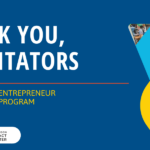A commitment to conscious business and conscious leadership involves learning new ways to engage across the board. This includes negotiations, an area that’s typically as far from “conscious” as it gets. Whether the issue is salary and compensation, supplier contracts, investment terms, or even where to order lunch, it absolutely is possible to negotiate clear agreements without resorting to a positional bargaining or zero-sum mentality. The key is to learn the art of creating win-for-all agreements.
What is a “win for all”?
People often misunderstand a “win for all” as “I stand for what I want, you stand for what you want, and we figure out where to go from there.” That’s not the win for all we talk about at Conscious Leadership Group. We mean that we all stand for everyone walking away with a full-body, unqualified “Yes!” (More on that later.) Anything other than this simply isn’t a win for all.
Achieving this outcome requires that the solution be big enough to include everybody’s wins. At first, it might seem hard to create a vision that’s big enough to be that inclusive, but the commitment to do so allows us to leave limited thinking behind and embrace unforeseen imaginative solutions. I’ve never seen a situation where everyone is devoted to a win-for-all solution but together aren’t able to create one. Never.
Here’s how to practice negotiating this way.
1. Get clear on what you want
Creating a win for all requires that everybody articulate what a win means for them. Have all parties answer the question “What does a win look like for me?” Be as specific and clear as you can.
This step may challenge you, especially if you’re negotiating on your own behalf. If you try to articulate your win and you’re not able to, that’s a sign that you’re not yet willing to know what you really want. Some part of you is probably afraid of the truth.
One trick to help your ego let go of its fears is to ask if you would be willing to know what’s true — but not necessarily to execute on it. Just blurt it out. Write down the most selfish version of how you would like this situation to go. Make it as ideal as you can; not because you’re trying to force the other side to negotiate from a different set point, but because it’s what’s true for you.
Give yourself permission to be selfish and unreasonable. Being selfish is important at this stage. “Unreasonable” just means you’re making a request before you’ve heard what the other side’s needs are. If later you get feedback that what you’re asking for feels unreasonable, it’s an opportunity to learn more about the other side and how they see the situation. Be more interested in learning from them than trying to get the right version out. Start with putting everything down on paper. The learning lies in putting it all on the table.
Remember two things: 1) Wanting something doesn’t mean that you’re entitled to it, just that you want it. Not allowing yourself to want something or admit that you want it robs everyone of learning and is a set-up for walking away resentful. And 2) You won’t ever get what you don’t ask for.
2. Invite everyone to the table — and set it thoughtfully
The best way to eliminate drama is to create shared commitments and clear agreements with the others about how you want to negotiate. Taking the time to define these specifics can eliminate unproductive debating, hard feelings, and disappointing results.
Ask each person to commit to the following:
• I commit to get clear about what a win for me looks like.
• I commit to stand for your win as much as I stand for mine.
• I commit to keep the conversation going (now or at a later time) until we’ve each found our own whole-body yes.
Agreeing to these commitments doesn’t mean you’ll execute them perfectly; it just means you can count on everyone to recommit over and over when you fall off of them. If these factors aren’t agreed upon, then you’re back to the old way.
Make sure that you create plenty of time to allow for creative solutions. The more complex the issue and the more people involved, the more time you will likely need.
3. Educate as necessary
If your bargaining partners are skeptical of this method or unfamiliar with the conscious leadership framework, you may need to educate them. See that as taking responsibility for getting the negotiation process you really want.
Consider asking them to watch our short video that illustrates the conscious leadership concept of locating yourself (bit.ly/clg_locate). You might say, “We want to practice being open and curious together. Here’s an example of what it would look like. Does that interest you?” Explain that you’ll all work to notice yourselves (or others) getting reactive or defensive, and that when it happens, you’ll practice outing and owning it so you can create a sustainable and effective agreement together.
You might share the 15 Commitments of Conscious Leadership handout, and highlight a few of the key commitments that apply: Appreciation; Seeing All People and Situations as Allies; Candor; and, of course, Win-for-All Solutions.
What if they’re not willing?
It’s important to make sure everyone is committed to creating a win-for-all solution. Anything other than a whole-hearted yes is a no. If your negotiating partners say things like: I’ll try. I’ll do my best. This seems weird. I don’t know this language very well. Or any version of “We’ll see,” they are giving you feedback that they are not fully committed. “Try” means wanting credit for something you have no intention of doing.
Be mindful about making sure you’re really listening to the others. There’s nothing worse than going to the table hoping they’re willing to play and they’re not, then realizing you skipped over listening before you got there in the first place. It’s worth addressing any concerns you have about the sincerity of the others’ commitments before getting started.
If they’re not willing to say yes, you have to recognize that you’ll be negotiating with someone who doesn’t want to stand for a win for all. You’re at a choice point:
You can acknowledge that you’re not interested in collaborating with people who aren’t willing to stand for a win for all, and then walk away from the negotiating table altogether (if it’s possible).
Your other option is to choose to negotiate knowing that you’re playing a zero-sum game. One of you will win and one will lose, or both will lose in the case of a compromise. It’s common for zero-sum games to eventually lead to resentment and drama somewhere down the line.
4. Come together and get creative
Once you’ve confirmed that your partners are ready to engage in this way, start the conversation with everyone saying, “Here’s what my win looks like. I don’t know if this is unreasonable or not, but it’s what looks exquisite to me. I’m more interested in learning than I am in trying to do it right.”
Once everyone has named what they want and expressed their reactions to hearing the other parties’ desires, it’s time for the fun part: creatively finding a win-for-all solution. Don’t worry if you can’t see what the solution is going to look like yet. You can’t know before you start this process. You simply start exploring.
I love “wonder questions” at this stage. Frame a question that’s bigger than any one party. For example: “I wonder what it would look like for me to work x number of hours, and for us to get all the work done without hiring anyone else.” You might start to feel stupid asking the question when you have no idea what the answer is. Sit with it; let yourself get curious. The more curious you get, the more likely you are to innovate and disrupt patterned thinking so you can come up with something you haven’t considered before.
Another question to ask at this stage: what if the answer is easy? What if it could just as easily be simple as it could be complicated? What if the solution is simple, fast, and quick? And if there is complexity, could we find ease in the complexity?
If there are a lot of different perspectives, you may not come to a solution during your first discussion. You may need to go away and be with the question, then come back to the table. Sometimes complication can be easily addressed by just giving it some time and space to breathe.
Tips for exploration
Get up and move your body in new and different ways as you think, or take on a posture that is radically different than usual.
Toss a ball quickly from person to person as you blurt out any and all possible solutions (all ideas are welcome, even the ones you think are stupid).
Question your beliefs about how the issue has to be solved.
Take on a toddler’s try-anything mindset. The answer will not often come from your past experience or from how you know how to solve issues. Otherwise you would have figured it out by now.
5. Find the whole-body yes
You’ll know when you’re done when everyone at the bargaining table has a whole-body yes to the solution. This process only works if you keep working until you’ve found something to which all parties can say, “Ah, that feels good.” Then check: is there any place in your body where you notice any constriction about the proposed solution? Is there any part of the proposal that doesn’t feel like a win for all inside yourself? If so, keep going.
What about compromise?
Compromise is lose–lose, and it causes resentment. The costs over the long run are high. It’s not a strategy that will get you where you want to go. Compromise is a mindset, not a specific result. You could end up with a solution that from the outside looks similar to a compromise, but the key difference is how it feels to the people involved. Are you giving something up? Do you feel constriction in your body? Or are you choosing to offer something because it’s part of a bigger win you’re standing for? The sensations in your body and ease of your breath will guide you here.
During negotiations you may discover that people are not as willing as they thought they were. Then the question becomes: am I still willing to stand for my win? If the other parties don’t want to stand for a win for all, you have to identify what you have control over and what you don’t and negotiate from there. Or you might choose to leave the negotiation or the relationship.
It’s not always easy, but it’s always worth it.
Practicing negotiating this way may take some courage on your part, and it requires going into the unknown to discover a solution. It’s often a vulnerable position; no one knows what a win for all looks like until you sit down and find out. But this is the work of changing business as usual.
I encourage you not to forget to ask if the negotiation also supports a win for Earth, for all beings, for the community at large, and for your teams and their families. Moving beyond zero-sum thinking in business supports a sustainable world where we collectively win





